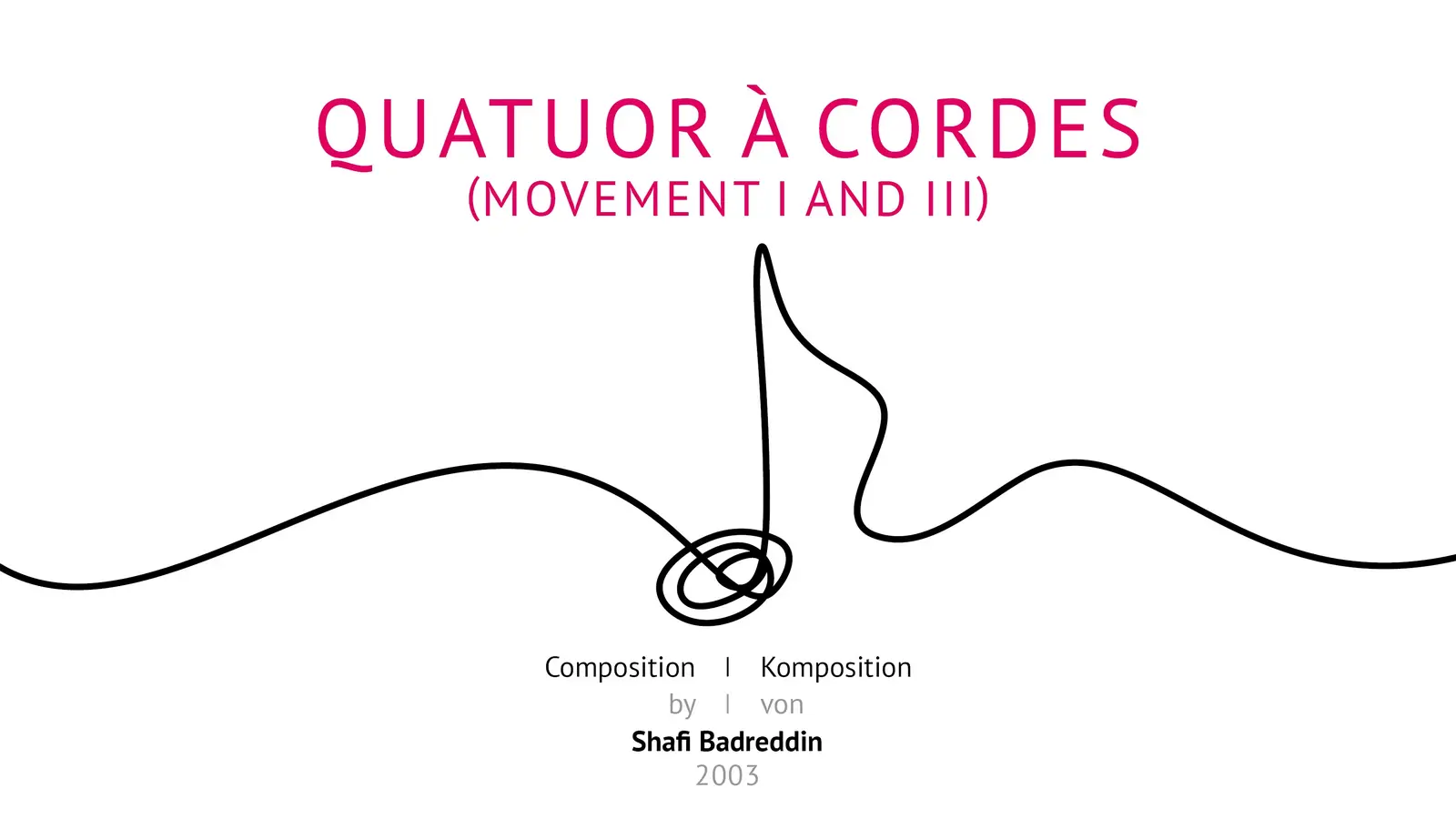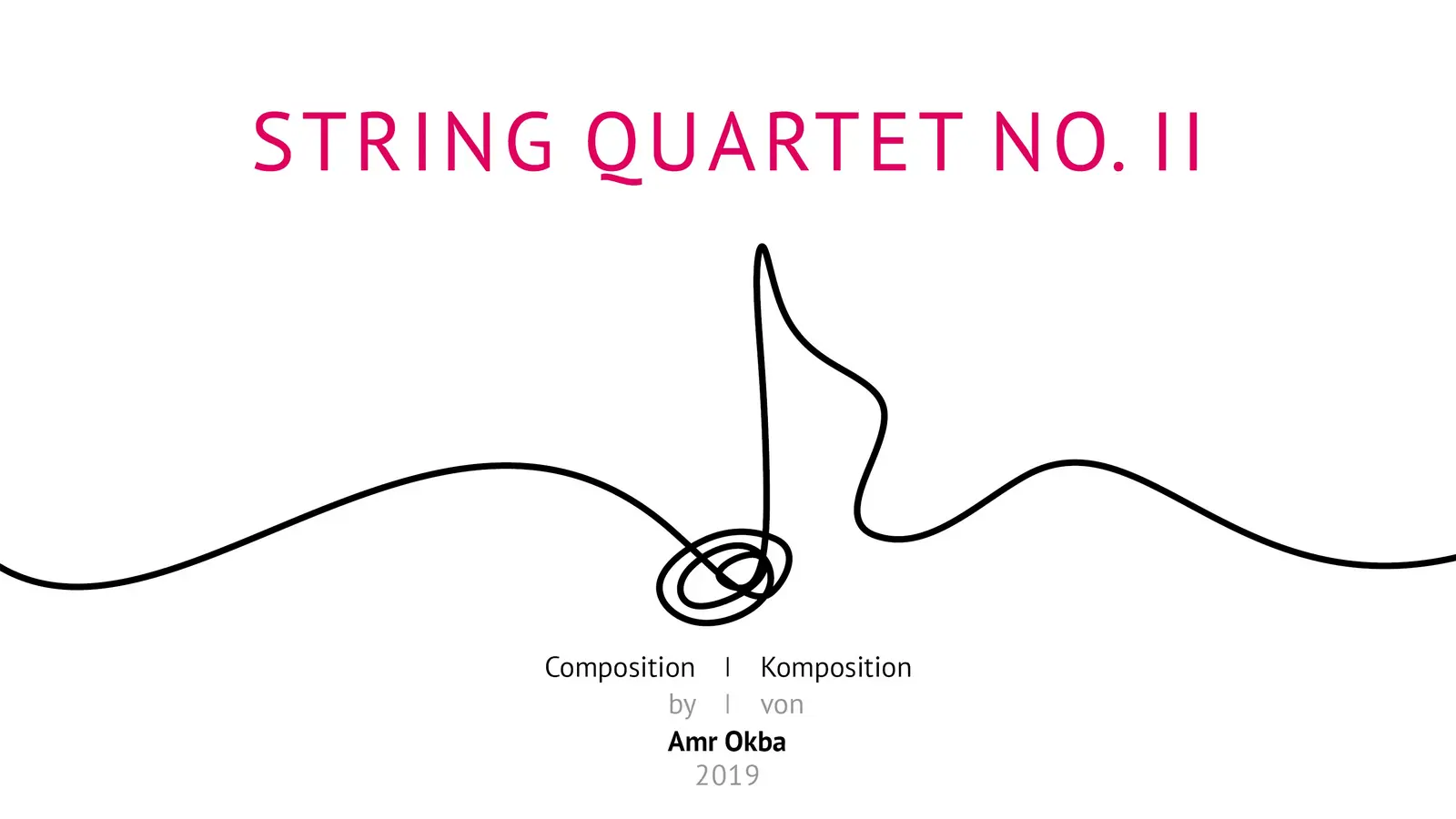Tandem Project
Avant-Garde Arab Music: New Compositions II
Music Workshop & Recordings
What happens when the Arab string instrument Qanun and the Arab flute Ney meet traditional Western bowed string instruments like the violin, the viola, and the violoncello? Their interplay creates a new and exceptional world of sound. AGYA member Dr. Rami Chahin and Dr. Mohammed Alkatan are immersed into this soundscape to further explore this exceptional interaction.
Five pieces of contemporary music are waiting for curious ears to listen
Musicologist Rami Chahin gathered a diverse ensemble of composers and musicians from Brazil, Canada, Egypt, Germany, Italy, Japan, the Netherlands, Palestine, Poland, and Syria who ventured a contemporary interpretation of traditional Arab maqamat. As a result, five innovative pieces of contemporary music compositions have been recorded.
With this project, we try to connect the shared heritage of microtonal music in Europe and the Arab countries.
Rami Chahin
Microtonal music – exploring the richness of ‘in between’
Traditional Arab music and classical Western music are entangled in different philosophies, aesthetics, and – most strikingly – tonalities. Arab music follows a microtonal system: a tonal system, which has specific intervals smaller than a semitone. It is known for its richness and variety of tone intervals that differ from Western twelve-tone. The microtonal interval is the tonal basis for the so-called maqamat, which is a concept from Arabic music theory. Another main characteristic of Arab music is a high share of improvisation: Arab musicians have developed high skills to perform freely different kinds of sound techniques and maqamat modulating creatively between them. Different intervals are used to express various feelings.
These diverse tonal possibilities and modes of expression lead to a great richness of tonal patterns, which open new horizons for classical Western music. Since the beginning of the 20th century, a large number of composers have been grappling with the question of an alternative tone system for their innovative works. The microtonal system offers a broad spectrum from which to draw.
The merge of traditional Arabic and classical Western music does not create only 'one' new acoustic colour. Through the rich possibilities of microtones, it creates a musical rainbow in which every shade can be expressed tonally. While the microtonal maqam intervals are deeply rooted in Arab culture, it can be an unfamiliar experience for Western European ears. However, this was not always the case as Rami Chahin explains: "The temperament twelve-tune system started to replace the variable microtonal systems only in the 15th century, when keyboard instruments and fretted instruments like the lute started to dominate live music performances. Later in the 17th century, musicians started to use the well temperament, which was developed by the German organist, composer and theorist Andreas Werckmeister.”
Example of Avant-Garde Arab Music: Quatuor à Cordes by Shafi Badreddin
This music piece can be considered as example of an avant-garde Arab music form. One could dance to this music in very different ways: expressive, sometimes very swinging, and with constantly changing tempo and dynamics. Composer Shafi Badreddin created a quite melodic microtonal music piece with a dance-like quality.
He used different melodic areas called Ajnas, which are trichords, tetrachords and pentachords within the maqam system. The composition Quatuor à Cordes includes mainly the following maqamat: Naqwa-Ather, Nahawand, Suzdilara, and Hijaz.
Minimal Music Meets Drama and Tension: String Quartet No.II by Amr Okba
The String Quartet No.II leaves the listener at first in uncertainty. This composition by Amr Okba is written neither in classical maqam nor clearly in tonal Western music. However, both influences are audible. The listener does not know exactly what to expect next from the four string instruments. Through the uncertainty, the music builds up drama and tension until suddenly, in the middle, the piece reveals its whole beauty and energy.
The piece starts by minimal music based on E and A as central pitches. By adding more tones, the music seems to belong to a minimal maqam Kurd on E, which is known in Western modes a Hypophrygian on E and used in medieval church music. In the further course of the music, the references to Arab maqam music become clearer, because the maqam called Nahawand-Kabir is used inadvertently.
Conductor Daniel Moreira describes the piece as slowly unwrapping a gift not knowing what is inside.
Find selected music videos below and the complete playlist here.
- Disciplines Involved
- Musicology, Pedagogy, Philosophy
- Venue
- Oldenburg/Hannover, Germany
- Cooperation Partner
- Werkstatt Zukunft
- Project Title
- Avant-Garde Arab Music: Critical Reflections and New Compositions
- Year
- 2020
- Funding Scheme
- Tandem Project
- Countries Involved
- Germany, Kuwait, Tunisia, Lebanon, Egypt
Quatuor à Cordes by Shafi Badreddin
Listen to this music piece and example of avant-garde Arab music. Composer Shafi Badreddin created a quite melodic microtonal music piece with a dance-like quality.
Musicians
Daniel Moreira - Conductor
Kana Sugimura - Violin
Leonardo Cella - Violin
Anna Szulc - Viola
Marta Bijlsma - Violoncello

String Quartet No.II by Amr Okba
Listen to the String Quartet No.II and explore classical maqam together with Western tonal music.
Daniel Moreira - Conductor
Kana Sugimura - Violin
Leonardo Cella - Violin
Anna Szulc - Viola
Marta Bijlsma - Violoncello



